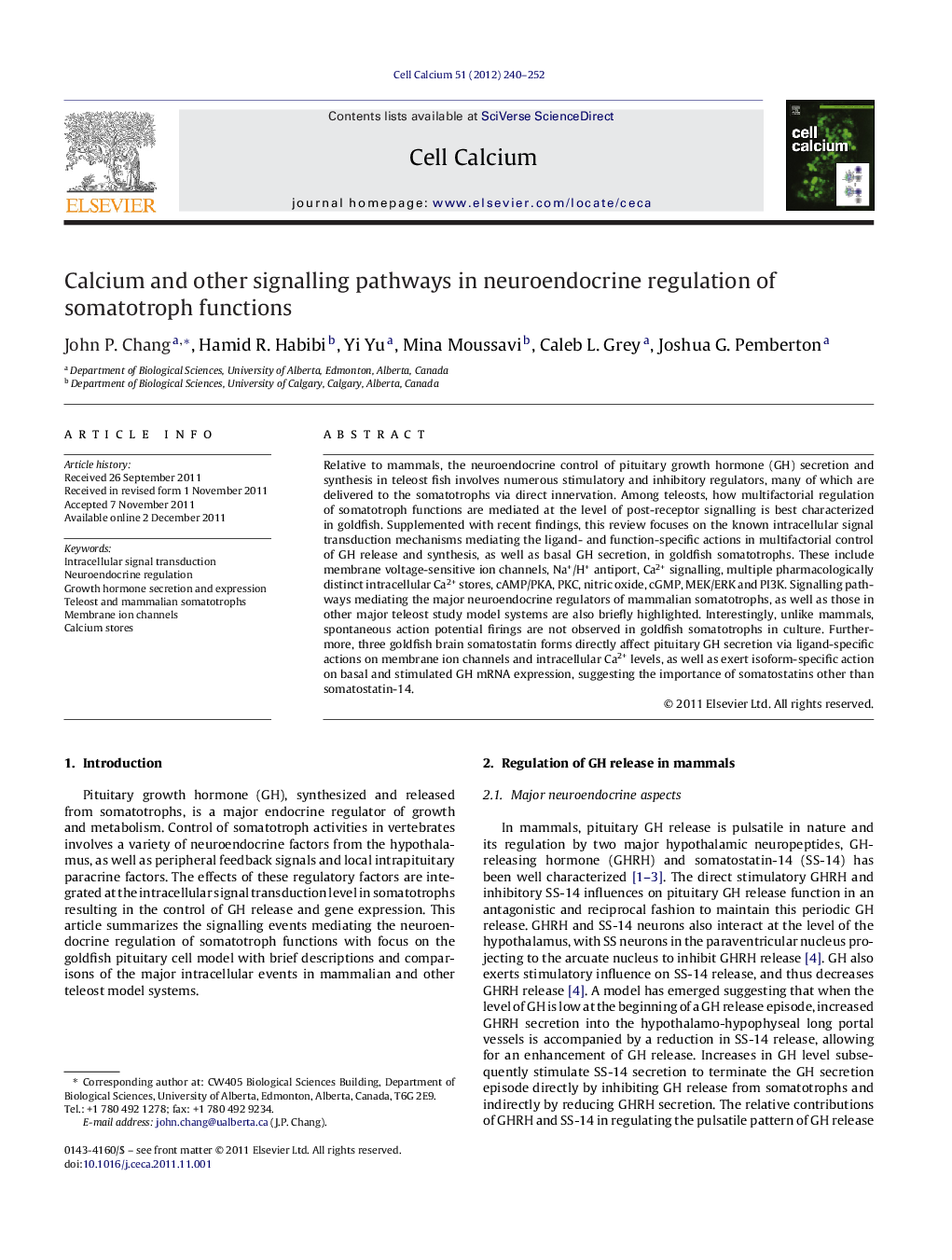| Article ID | Journal | Published Year | Pages | File Type |
|---|---|---|---|---|
| 8463471 | Cell Calcium | 2012 | 13 Pages |
Abstract
Relative to mammals, the neuroendocrine control of pituitary growth hormone (GH) secretion and synthesis in teleost fish involves numerous stimulatory and inhibitory regulators, many of which are delivered to the somatotrophs via direct innervation. Among teleosts, how multifactorial regulation of somatotroph functions are mediated at the level of post-receptor signalling is best characterized in goldfish. Supplemented with recent findings, this review focuses on the known intracellular signal transduction mechanisms mediating the ligand- and function-specific actions in multifactorial control of GH release and synthesis, as well as basal GH secretion, in goldfish somatotrophs. These include membrane voltage-sensitive ion channels, Na+/H+ antiport, Ca2+ signalling, multiple pharmacologically distinct intracellular Ca2+ stores, cAMP/PKA, PKC, nitric oxide, cGMP, MEK/ERK and PI3K. Signalling pathways mediating the major neuroendocrine regulators of mammalian somatotrophs, as well as those in other major teleost study model systems are also briefly highlighted. Interestingly, unlike mammals, spontaneous action potential firings are not observed in goldfish somatotrophs in culture. Furthermore, three goldfish brain somatostatin forms directly affect pituitary GH secretion via ligand-specific actions on membrane ion channels and intracellular Ca2+ levels, as well as exert isoform-specific action on basal and stimulated GH mRNA expression, suggesting the importance of somatostatins other than somatostatin-14.
Related Topics
Life Sciences
Biochemistry, Genetics and Molecular Biology
Cell Biology
Authors
John P. Chang, Hamid R. Habibi, Yi Yu, Mina Moussavi, Caleb L. Grey, Joshua G. Pemberton,
